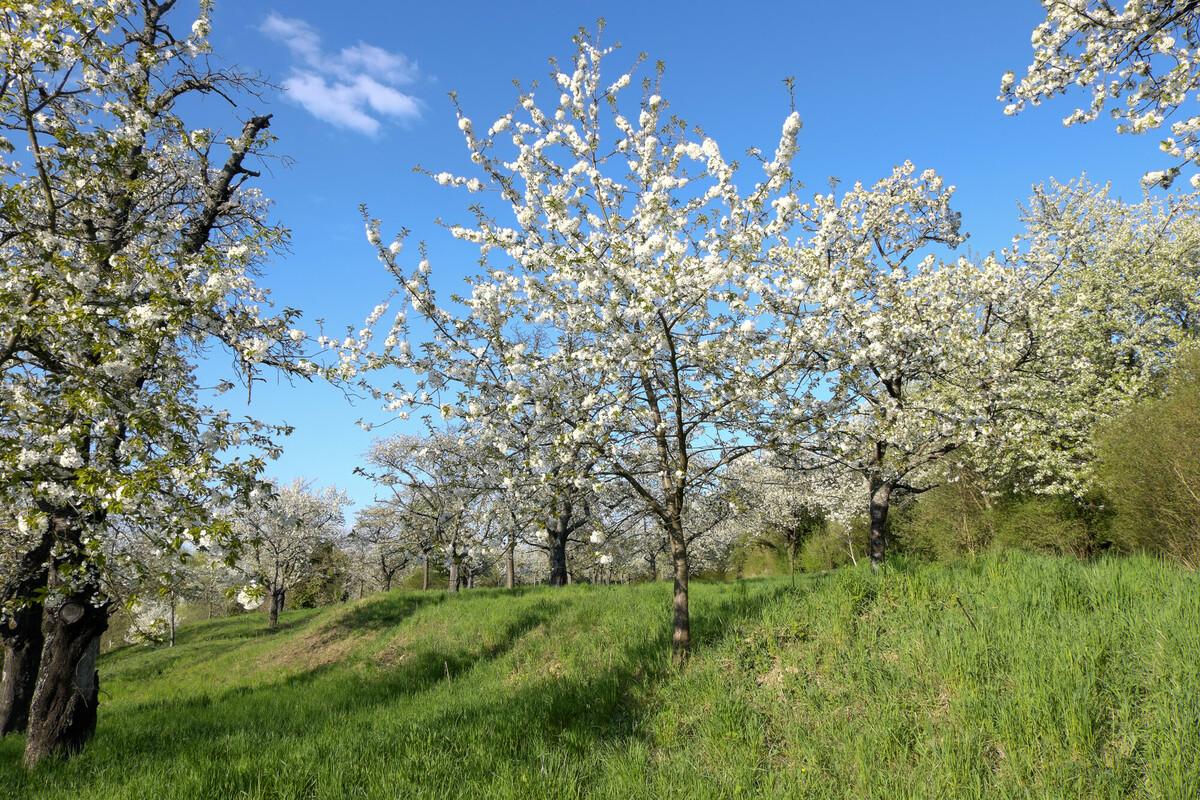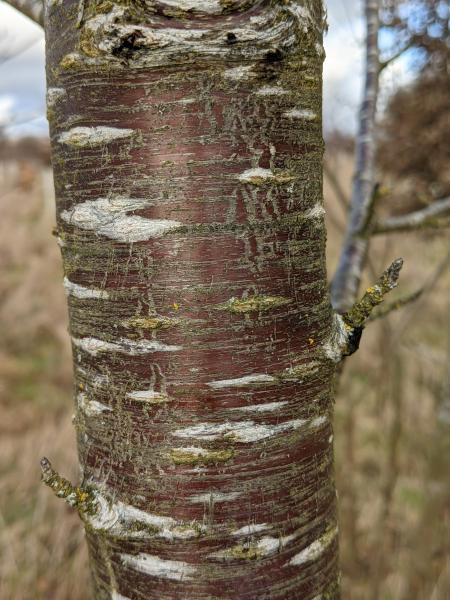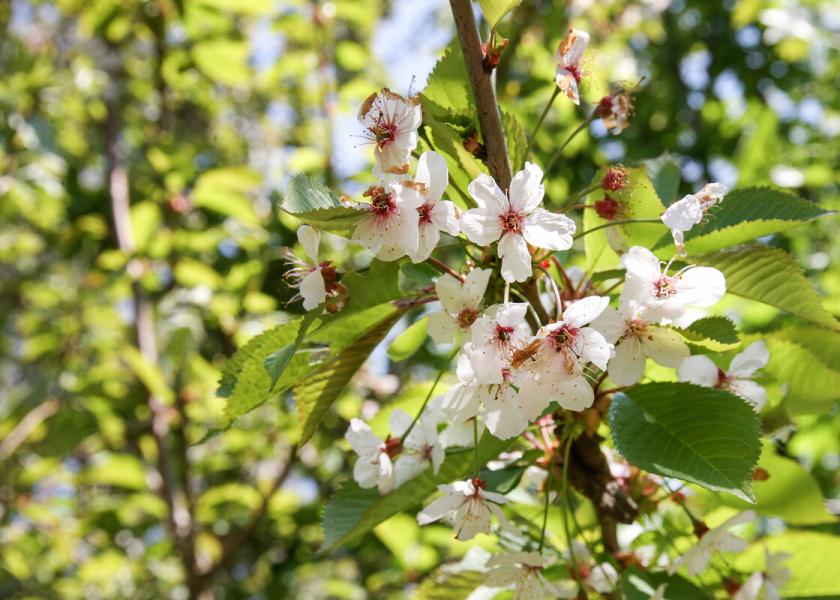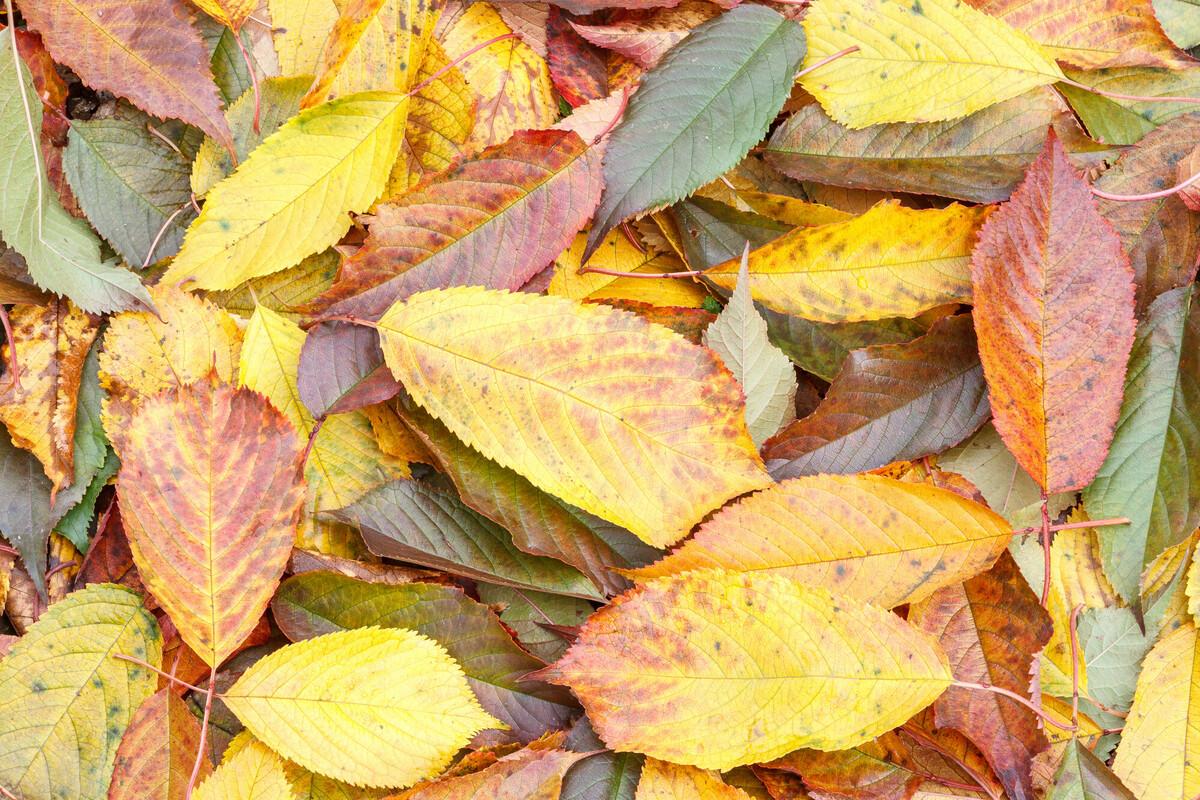
Species Name: Prunus avium
Known for its sweet fruits and dazzling springtime blooms, the wild cherry is one of the UK’s most attractive native trees. The wild cherry can grow up to 30m tall and live around 60 years.
The bark is smooth and shiny, reddish-brown in colour and has creamy-white horizontal lenticels.

The leaves are oval shaped, with serrated edges and a pointed tip. Green summer leaves turn to shades of orange and red in the autumn before falling off in winter.
Five-petalled, cup-shaped, white flowers grow in clusters in the springtime. The petals fall off after a few weeks of bloom, and the flowers develop into cherries. The cherries are round and start off yellow – ripening to a deep red colour.

Wild cherry trees are native to the UK, and can be found all over the country except for the far north. They favour sunny areas of the Forest with plenty of light. They are often planted in towns, parks and gardens for their attractive springtime blooms.
The cherry tree’s mythology emphasises long life. It is said that the cherry tree contains an elixir that grants God's immortality.
The wild cherry tree was traditionally cultivated for its fruit – it is now sought by gardeners as an ornamental piece due to its blossom. Cherry wood is commonly used when smoking meats to add a sweet, smoky flavour – the scent of the smoke is similar to the sweetness of the blossom.
One of the first flowers to bloom, cherry trees provide an early source of pollen and nectar for springtime pollinators. The fruits are enjoyed by birds and mammals, including badgers. Many butterfly and moth caterpillars feed on the leaves.
The “avium” in its Latin name refers to the way it is propagated by birds. Birds eat the cherries and redistribute the seeds, helping the tree reproduce.
3% of the trees we are planting in the Forest this season are wild cherry trees.




